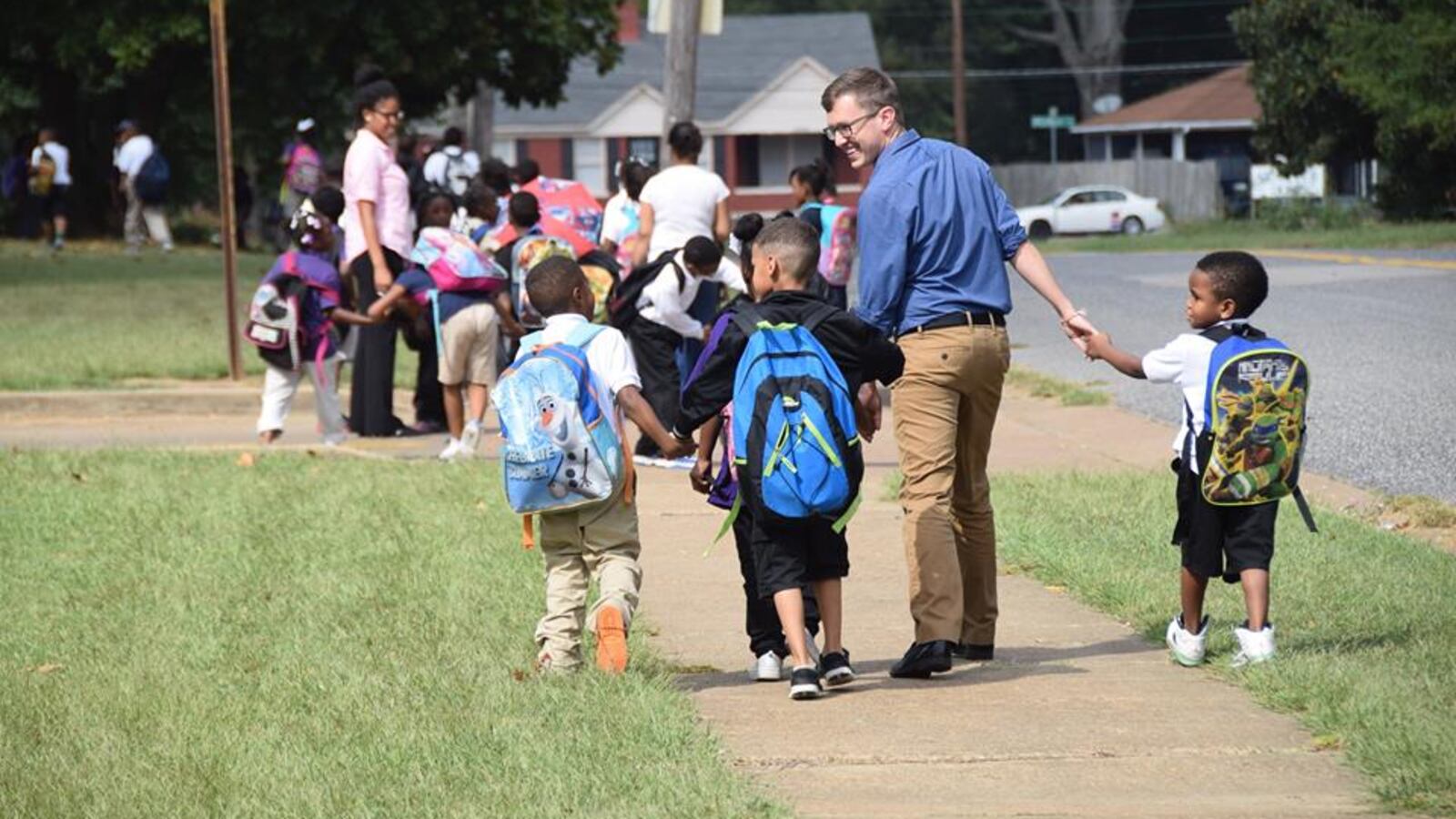Every day for years, I walked students home from Whitney Achievement Elementary School to the nearby apartments in Memphis where my students lived.

You might remember the story: I was the teacher photographed on that walk in 2015, and the picture went viral. The Today Show, People magazine, and local news stations across the nation picked it up.
The walk was a normal part of my day, and was for my colleagues Kevin Sullivan and Auriel Rolle-Polk, too. Other schools across Memphis participate in similar walking programs to strengthen relationships with our students and to ensure they arrive home safely. So we were surprised at the outpouring of love and appreciation after we were recognized on local and national news.
We felt the warmth of millions of virtual handshakes, high-fives, and pats on the back. We were awed by the kindness of strangers taking time to lift up our community. Even two years later, I am constantly reminded of our viral story and its impact on folks.
But what the photograph and news coverage couldn’t fully convey are the overwhelming barriers our students face.
Unfortunately, the reality is that living in Memphis means our students are growing up with one of the nation’s lowest opportunities for social and economic mobility. Our walking students home does not fix that.
When #blacklivesmatter is a controversial statement; when our black male students have a one in three chance of facing jail time; when kids in Memphis raised in the bottom fifth of the socioeconomic bracket have a 2.6 percent chance of climbing to the top fifth — our walking students home does not fix that, either.
We have so much more to do. Today, black Americans have 6 cents for every $1 of white wealth. Black Americans are incarcerated, brutalized, and prosecuted at much higher rates than white people. There is even a disparity in life expectancy for our students when compared to their white peers.
White privilege was even evident in the coverage of this story. I was the only white teacher of those who walked students home, and it’s no coincidence that I received the most attention and praise.
The teachers at Whitney Achievement and teachers across Memphis and America go above and beyond to provide a quality education for our students. But I’ve come to see that this education doesn’t make a true impact if other systems condemn students to a life of poverty.
That’s ultimately why I left the classroom after four years. There are so many great teachers and administrators working toward equity and justice for our kids, but they are not set up for success in a meaningful way.
The policies that end up in our schools need to be researched, funded, and constantly improved. We must find effective measures for alleviating both the trauma and poverty that students of color in Memphis face every day. We also need to stop prescribing blanket solutions and instead seek to understand communities.
Please join me and my colleagues in the fight. Educate yourself about the ways systemic racism creates vastly different Americas. Join a local volunteer chapter dedicated to a cause about which you feel particularly passionate. Support as many local, minority-owned businesses as you can. Vote for people who share these ideals and consider volunteering for their campaigns.
Truly walk with our students.
Carl Schneider is a 2013 Teach For America-Memphis alumnus and a community organizer at Stand for Children. A version of this piece first appeared at TFA-Memphis.
About our First Person series:
First Person is where Chalkbeat features personal essays by educators, students, parents, and others trying to improve public education. Read our submission guidelines here.


